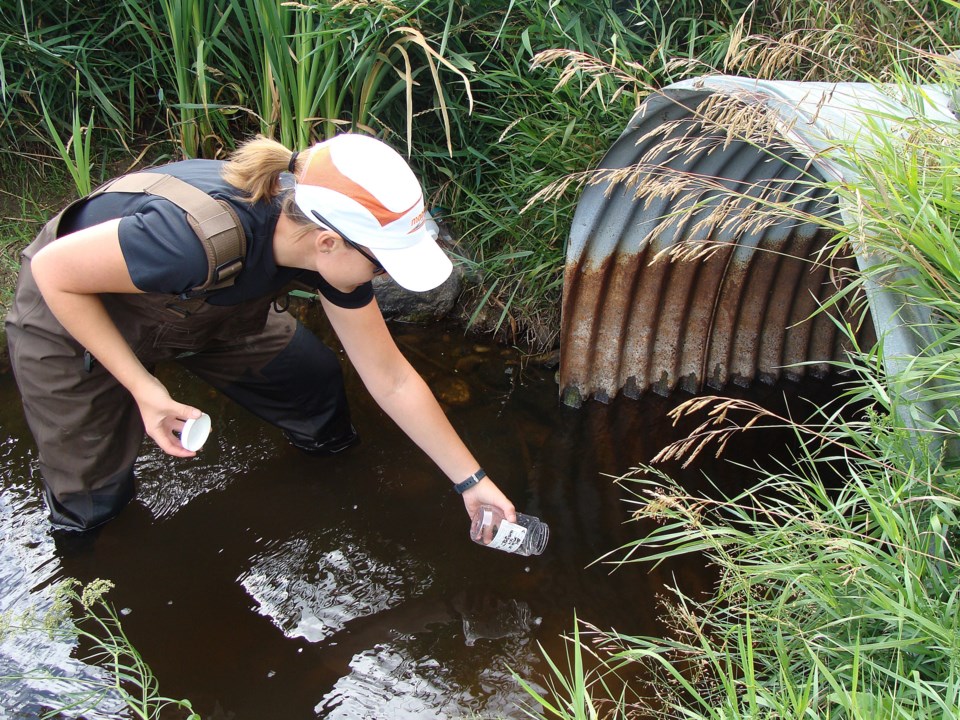Water is essential to life and we need it to exist.With water pollution and the problems it creates becoming more prevalent, encouraging people to take an active role in testing local water quality is increasingly important andurgent.
To that end, World Water Monitoring Day was established in 2003 as an international educational outreach initiative, with a goal to encouragepeople to test, promote the importance of, and protect their local water resources.
On Sept. 18n each year, people of all ages make time tolearn about and monitor the conditions of theirlocal rivers, streams, estuaries orother waterbodies. The participants, or ‘Citizen Scientists’, conduct simpleteststo assess water health and then share their results with other communities or more broadly across watersheds, states, provinces, or even on a national or international scale.
This year’s World Water Monitoring Day is perfectly timed with a local initiative, Nutrient Watch: Testing the Waters Together. The Carrot River Valley Watershed Association, South Saskatchewan River Watershed Stewards, Swift Current Creek Watershed Stewards and the North Saskatchewan River Basin Council are collaborating to encourage the public to collect water samples from tributaries of the South and North Saskatchewan Rivers.This project will study how the tributaries may be contributing nitrates and phosphatesto therivers and eventually to Lake Winnipeg.
Clean, healthy water bodies are the result of what surrounds them and what runs into them.Removal of shoreline vegetation is one of the most widespread types of damage impacting water quality. This can result in increased shoreline erosion and a higher sediment load in the water.
An increasein available nutrients, primarily nitrogen and phosphorous, is another common culpritimplicated in declining water quality and algae blooms. Nitrogen and phosphorus are primary components in fertilizers and animal wastes, and these nutrients are carried to water bodies from a variety of sources.
The health of local waterwaysis alsoaffected when wetlands in the watershed are drained. Wetlands, also called sloughs, ponds or marshes, are nature’s own water purifiers.When water moves through a wetland the bacteria on wetland plants, rocks and soils consume and process some common water pollutants.Soil particles suspended in the water sink to the bottom of the wetlands as the rate of water flow decreases, and contaminants are held in the wetland soils.Wetland plants are efficient biological filters and will absorb and useexcess nitrogen and phosphorus.When wetlands are converted to other land uses, the water purification functions they performed cease. Depending on how many wetlands have disappeared, this could impactthe water quality in your area.
Waterquality inparts ofSaskatchewanis deteriorating, posing a risk to people, livestock and wildlife. Watermonitoring is a crucialfirst step in understanding what we need to address.Along with water purification and filtration, wetlandsprovide society with many benefits including flood and drought protection, carbon sequestration, and wildlife habitat. Healthy waterwaysdepend on the health and presence ofwetlands, and like our bodies, on what we put into them.
Michael Champion, PAg – Head of Industry and Government Relations
Ducks Unlimited Canada –Saskatchewan
Ducks Unlimited Canada (DUC) is the leader in wetland conservation. A registered charity, DUC partners with government, industry, non-profit organizations and landowners to conserve wetlands that are critical to waterfowl, wildlife and the environment. www.ducks.ca



